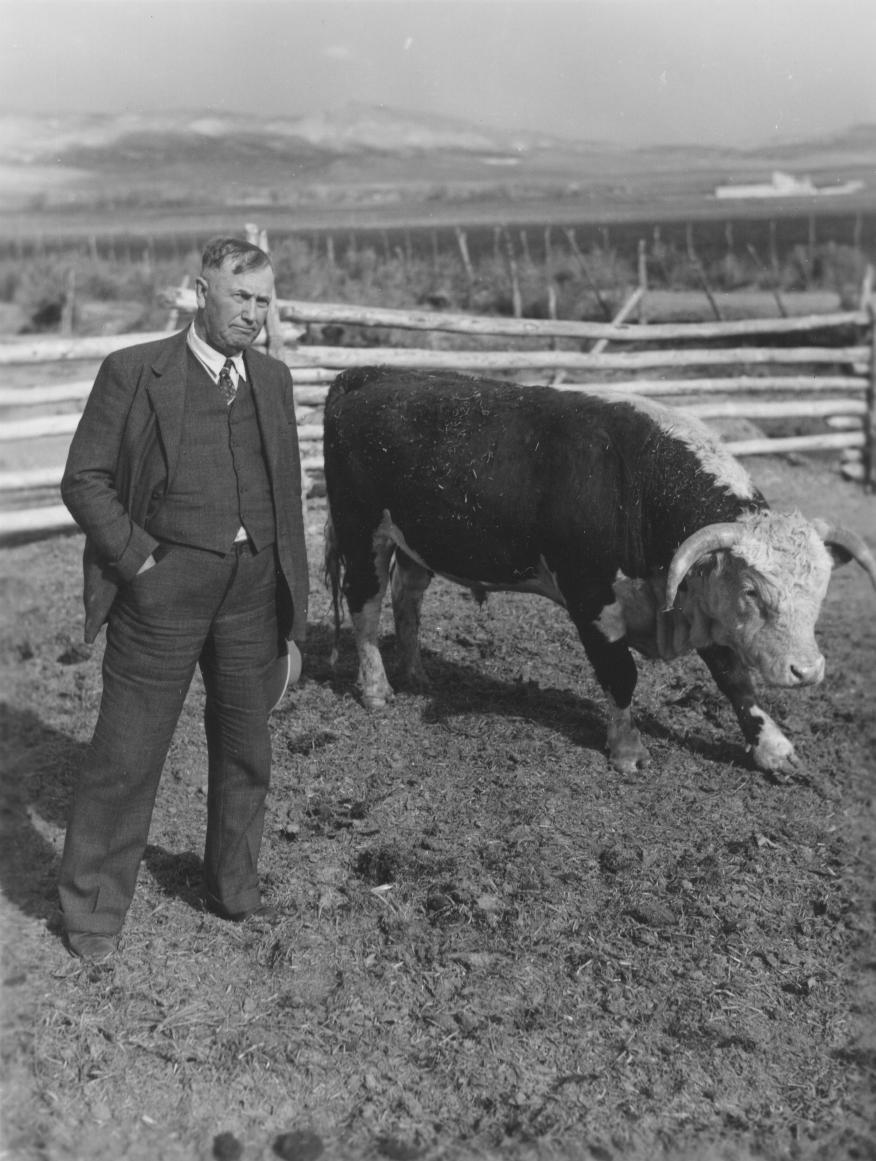John Albert Scorup
John Albert Scorup, known as both J.A. or Al, was the son of Danish converts to The Church of Jesus Christ of Latter-day Saints who came to Utah in 1855. He was born on September 29, 1872, in Ephraim, Utah Territory and raised in Salina, Utah, and his father was in charge of a co-op herd of sheep.
At the age of 19, in 1891, he left Salina, crossed the Colorado River, and embarked on a path that would connect him with cattle raising in the southeastern Utah canyonlands. For a year he worked for Claude Sanford, finding his 150-head herd of cattle hidden in the maze of “cracks, washes, and cliffs that split and hedged the country.”[1] He also encountered Texan cattlemen who considered the territory their own, and they eventually ran Scorup out.
He returned to Salina and persuaded his brother Jim to return with him to the north side of White Canyon. They lived in caves and shanties near their herd. The first years were difficult for the range cattle industry overall. The Texans began to leave and sell their herds to the Bluff cooperative. When Al and Jim were down to only 40 cows and a few calves, Jim wanted to get out of the business, but Al saw an opportunity to earn money and rejuvenate their business. He left Jim with their herd and he went to work for the Bluff cooperative, rounding up the Texans’ herds that had gone wild. He was paid $5 a head, and when he finished he had $10,000.
In 1896, the Kansas and New Mexico Cattle and Land Company had also been suffering from falling prices, overstocking, and homesteaders, so the Bluff cooperative bought what remained. In 1898, the Bluff cooperative was ready to sell and Al Scorup was ready to buy.
In 1918, the Scorup brothers decided to leave the canyon cattle business to be closer to their families so they bought the Sevier County ranch. Jim ran this business while Al went into business with Bill and Andrew Somerville to purchase the Indian Creek Cattle Company. But tragedy struck when Jim suddenly died from pneumonia and the Sevier County ranch lost 2,000 head of cattle due to heavy snow.
In 1926, Al formed the Scorup-Somerville Cattle Company with the Somerville brothers and Jacob Adams. It was soon the largest ranch in Utah with 7,000 to 10,000 head on close to 2 million acres, 99 percent of it on public land, the largest public land permittee in the United States ranching history. Scorup was president and general manager, and guided it through the Great Depression, World War II, and the post-war years. It was headquartered at Dugout Ranch, just east of the present-day Needles District of Canyonlands National Park.
His cattle grazed in the Blue Mountain ranges during the summer, and during the winter (October through May), Al moved the herd to the canyons where he had started in the 1890s. Scorup and his ranch hands had to stay with the cows in order to make the canyonlands work for the herd.
Scorup served as a San Juan County commissioner and president of Moab’s First National Bank, and represented Grand County on the district grazing board established by the 1934 Taylor Grazing Act.
Scorup died on October 5, 1959, in Moab, Utah. He was inducted into the National Cowboy Hall of Great Westerners in 1960 as a cattleman and church leader.
In 1967, the Scorup-Somerville Cattle Company went out of business and was bought by Robert Redd. Scorup's home in Bluff, Utah, which he and his wife and six daughters occupied until 1917, is listed on the National Register of Historic Places.
He is the subject of several biographies, J.A. Scorup: A Utah Cattleman; Lonesome Trails of San Juan: The Ranching Legacy of J.A. (Al) Scorup; Al Scorup: Cattleman of the Canyons; and Opening the Road to Chesler Park: How Al Scorup Inadvertently Helped Create Canyonlands National Park.
